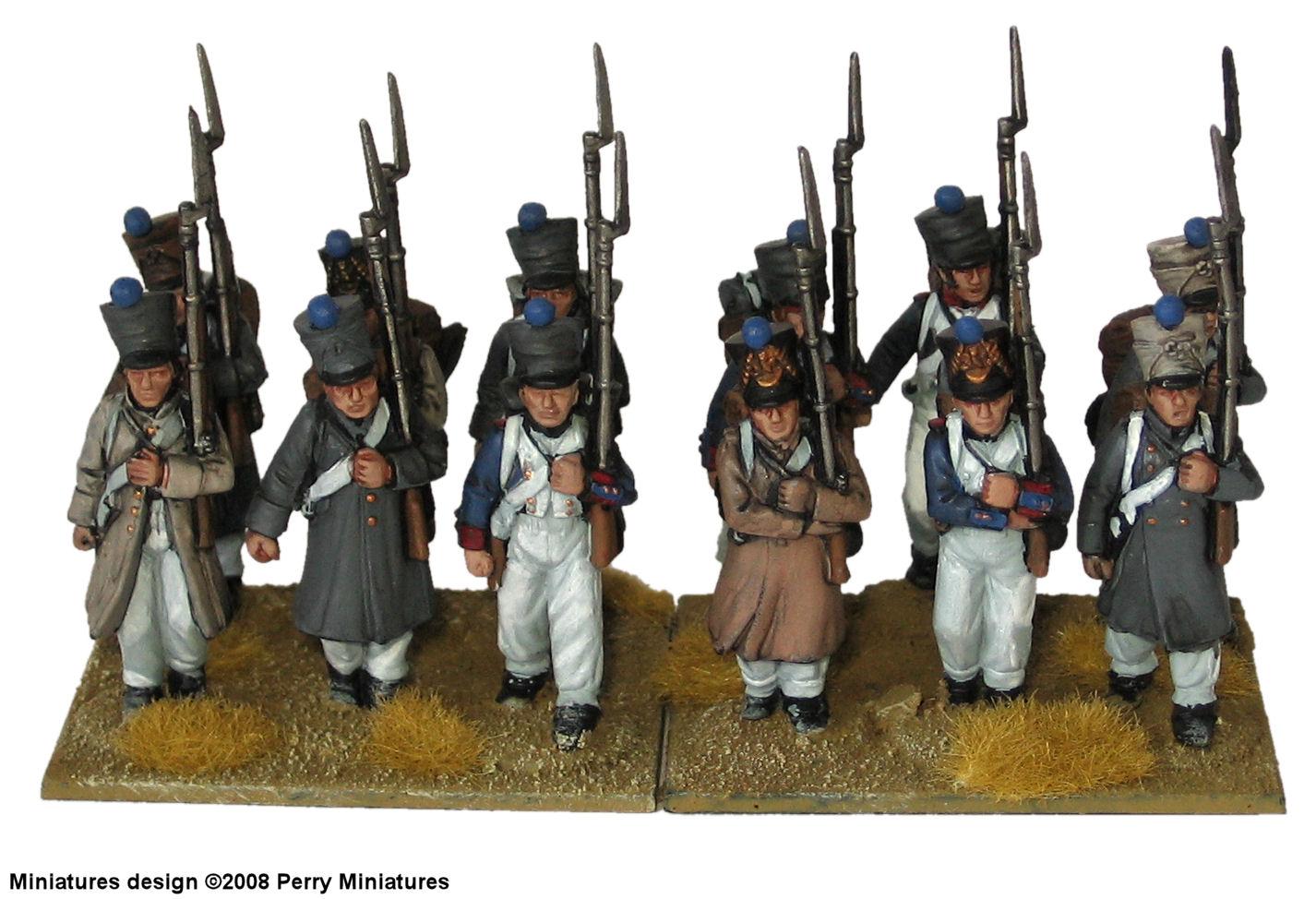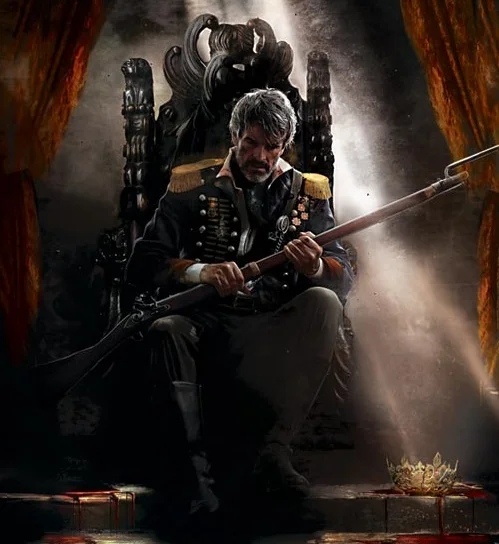The world of Flintlock Fantasy is a world in turmoil. In Burgundy, the old monarchy, long known for decadent and lavish lifestyles, has been toppled in a bloody revolution. All around the young republic, ancient regimes have combined into an Alliance, bent on containing the revolutionary fervor and uphold the Gods-given right to rule.
The continent upon which this story of revolution and war, ideals and bloodshed, takes place is called Andunor - the Western Lands in the tongue of the elves. The sun sets in a great sea west of the continent and in the dim days of prehistory, mankind and its sibling peoples emerged out of the east to spread out across the verdant expanses of Andunor. Once, long ago, the continent was united in a great Imperium of the Dawn but centuries of barbarian invasions, insurgencies, rebellions and internecine wars have left Andunor a patchwork of principalities for most of its history. Only in the past two centuries have kings been able to once more unite the disparate duchies, baronies, counties and free domains into a handful of powerful kingdoms.
Kingdom of Antissa
An ancient kingdom, the first to become independent from the Imperium of the Dawn, Antissa is a land of old nobility and traditions of chivalry. Antissa is a kingdom where the feudalism of old has been replaced with centralized government by the king. The king of Antissa rules with an iron fist in a velvet glove, supported by the landholding nobility, from a grand palace near the capital. It is an agrarian society, the majority of the population consists of peasant farmers. But a thriving middle class in the cities has flooded the nation with wealth. Antissa's armies bear muskets and bayonets and are divided into infantry and cavalry batallions. But Antissa has a unique advantage: regiments of griffon-riders provide the old kingdom with air superiority against its enemies - most prominently the fledling Burgundy Republic. Over the past century, Antissa has started to organize its loose collection of colonies in the eastern continent of Aurumdor into a proper client-state.
Aurora, the City of Dawn
The First City, the City of the Dawn, the Holy City, the City of the Gods - all names that refer to that single and wondrous point of light in an otherwise dark sea of a world: Aurora. It was the first place where the tribes of mankind built their houses, the end of the Great Migration in prehistoric times. Following a sign from the gods, nomadic tribes wandered into the West and finally reached land's end on the island where now stands the City of Aurora. They then founded an empire that eventually encompassed all of Andunor. And though the Imperium crumbled, its heart remained. Aurora has remained the center of culture, religion and civilization for millennia. Its streets have borne witness to the great drama of human history, its churches to the hopes and dreams of hundreds of generations. It is the home of the living gods and the house where the spirit of tradition lingers, an exemplar for all the kings and princes of the old continent. And though the lands of Andunor have over the centuries broken away from Aurora, the City of the Dawn has over the past two hundred years established colonies on the eastern continent of Aurumdor.
Burgundy Republic
A young nation, brimming with excitement, Burgundy was part of the Kingdom of Antissa until the Duke of Burgundy became more powerful than his king and declared his lands independent. More recently, the farmers, laborers and middle class of Burgundy have awakened to an idea of nationhood and, in a fit of revolutionary fervor, dethroned their king. Now, the Burgundy Republic shines as a beacon of liberty and equality, surrounded by tyrannies. The country stretches from the border with Antissa to the south, along the mountains that form the border with Silvanor to the east, to the northern lands abutting the Winter Sea. It is a land of rolling hills and grassy plains, where hospitality and festivity are virtues. The spirit of the Revolution has also unleashed a feverish pace of innovation and discovery, with new technology and clockwork machinery discovered at a frantic rate. The Republic is led by the National Assembly, a gathering of representatives of the people governing from the city of Gravendam. It thus expresses the ideals of democracy, but chaos and anarchy lurk around the corner as Burgundy's armies flock to defend their borders against the forces of tyranny that would expunge the light of freedom from this world.
Eastern Marches
The farthest extent of the Imperium of the Dawn was formed by the mountainous region known as the Eastern Marches. At its eastern border, the city of Kuvera was built at the crossroads of east and west, north and south. It attracted scholars, explorers, hustlers and adventurers. But most importantly, it became a city of magic. The mystical traditions thrived in this climate of cultural and mercantile exchange. When Antissa broke away from the Imperium, the eastern domains became a ragged collection of independent and competing fiefs, and have remained so until this day. When a disgraced noble or a merchant caught in illicit affairs seeks to slink away for a while, they do so in the Eastern Marches. When a banished prince seeks an army to recapture his throne, he does so in the Eastern Marches. When an adventurer seeks a place to create and hold a domain for herself, she does so in the Eastern Marches. But the region is not a place of tranquil liberty, the realms of Silvanor, Antissa, the desert princedoms of Erumenor and the eastern empire of Rhundor all border the Marches and prevent any one power from becoming dominant in the region.
Kingdom of Silvanor
When the tribes of mankind wandered West during the Great Migration, many elves remained behind in the woodlands that would become the forests of Silvanor as their human siblings crossed the mountains to the west and south. They studied magic at the feet of the great spirits we nowadays call Dragons. During the time of the Imperium of the Dawn, these elves founded great cities of living wood and sparkling starlight. A number of them resumed their westward migration, crossing the Winter Sea and setting foot on the land we call Aurumdor. Then, centuries later, the sons and daughters of these Light Elves returned to Andunor to fight the Shadow. After the war, some of these Light Elves remained in the old continent but the Silvanor Elves still make up the majority of that people. Silvanor is a kingdom full of enchantment, mist and mystery. But with their long lifespans and traditional perspectives, the elves of Silvanor have stagnated. They have difficulties adopting new weaponry or methods of warfare and are harassed by northern barbarians and raiders from the Eastern Marches. Yet when roused, the Silvanor war machine is still an immense and powerful force of highly disciplined warriors and mages.
Lands of Skygge
Not truly a nation at all, the wild, northern expanses loosely governed from the site called the Pillars of Skygge is a land of darkness and despair. Chaos, blood and the code of might makes right rule the north, all coalescing in the ancient claws of Skygge. This human has ruled these northern lands for time out of memory, which has caused all manners of myths and legends to take root. Speculation on the origins of Skygge abounds. Some claim he is the half-fiendish son of a witch and a being of the lower planes. Others that he is an ascended priest of Chaos and Evil. Most learned folk hold to the theory that he is an incarnated demigod that has decided to carve out a realm on the mortal plane. Whatever his origins, Skygge has close ties to the mystical force known as the Wyrm and is a source of constant sorrow for northern Burgundy, Silvanor and Varangia.
Kingdom of Varangia
North of Burgundy, the Varangians have shed their traditions of savagery and paganism. Being a collection of tribes and warbands for most of human history, in recent centuries the Varangians have coalesced into a stark but powerful kingdom of their own. Prompted to unify in the face of the threat of Skygge on their eastern border, the Varangians have refocused the rites of their warrior society to fighting against the hordes of Skygge. They have adopted modern weaponry and a centralized form of government but it remains a veneer of culture on a raging mass of primal traditions. While it calls itself a kingdom, the Varangians are looked down upon by the royalty of Antissa, Aurora and Silvanor who cite their lack of ancient bloodlines as unfit to the status of sovereign monarchy.










